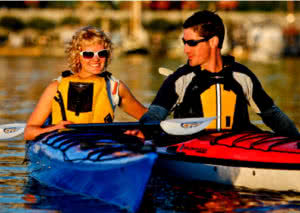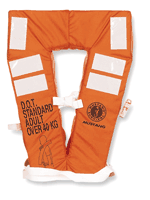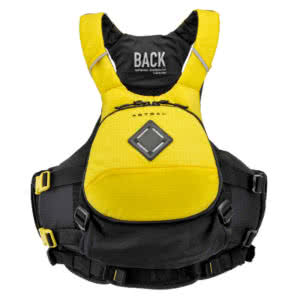Life Jackets and PFD’s, do you really need to wear them?
Transport Canada’s Small Vessel Regulations state that: “PFD’s must be comfortable and functional enough to be worn at all times. Highly visible, short models with pockets for distress flares, radio, and whistle are preferable”. You should also be aware that the Transport Canada regulations also apply to stand up paddle boards, even when leashed. The only exception for SUP’s is when in the surf zone.
The regulations don’t specifically say that you have to wear them, but to the question, should you? The answer is absolutely, and there are very compelling reasons why. According to the Red Cross, hundreds of Canadians drown each year while boating. Most of them never intended to be in the water, but 87% of those that drowned were not wearing a life jacket or PFD or did not have it done up properly. That should be compelling evidence enough.
The Difference Between PFD’s and Life Jackets
A Canadian approved standard life jacket, when worn properly, is designed to turn an unconscious person from face down to face up in the water, allowing them to breathe. Life jackets are intended for life preservation but are not designed for long term comfortable wearing. As such, life jackets are not really practical for recreational paddle sports.
PFD’s (Personal Flotation Devices) were designed for use in recreational boating and are generally smaller, less bulky and far more comfortable to wear than life jackets. As a result, they have less flotation than life jackets and may not float you face up if you are unconscious. However, because they are comfortable and easy to wear, people are much more likely to use them. The most important consideration in choosing a PFD is fit, not only for comfort but to ensure that you will float properly if you find yourself in the water.
Reasons to Wear Your PFD
How Long Can You Tread Water?
Many people make the mistake of thinking they are good swimmers and therefore don’t need a PFD, forgetting that there is a limit to anyone’s endurance in keeping your head above water if you become separated from your boat. This doesn’t take into account the effects of cold water or the possibly of falling over and hitting your head rendering yourself dazed or unconscious.
Cold Water
The debilitating effects of cold-water exposure on the human body cannot be understated. This is something we have to be particularly concerned with all year round here on the west coast.
Cold Water Effects:
-
- Most people who are unaccustomed to cold water will experience cold shock response somewhere between 10-15ºC or 50-60ºF. This means that an unprotected immersion will cause most people to completely lose control of their breathing – they will be gasping and hyperventilating as hard and fast as they can. This can lead to inhalation of water and drowning.
- Cold water robs the body’s heat 32 times faster than cold air. As well, physical exercise such as swimming or just struggling to keep your head out of the water will cause the body to lose heat at a much faster rate than remaining still in the water.
- Depending on your body type and size, exhaustion or unconsciousness from hypothermia can occur in 30-60 minutes in water temps between 4 – 10C or (40 – 50F), with survival times from 1-3 hours.
You Can’t Put a PFD On Once in the Water
Some people think that as long as the PFD is in the boat, or safely tucked under the bungie cords on the deck, that they can reach for it or someone can throw it too them. This is not ok. Separation from your boat means separation from your PFD. If you are capsized in windy conditions and lose your grip on your boat, it will blow away from you faster than you can swim after it. Secondly, try thinking about keeping your head above water while using both hands to try and pull a very buoyant PFD down into the water to a point where you can fasten it, all without being able to see what you are doing and with cold fingers. One further consideration for kayakers is a PFD strapped under the rear deck rigging can significantly impede reentry.
Conclusion
Make sure you buy a comfortable PFD that fits you, always wear it and make sure it is fastened and adjusted properly. A PFD that is not done up or is not fitted properly will float up over your head rather than lifting your head above the water. There is a lot to consider when choosing a good, comfortable PFD which we will cover in another post.
Happy Paddling!
Bruce Holland – You can also catch me at Ourhomehas6wheels.com or Brakelightfoto.com




